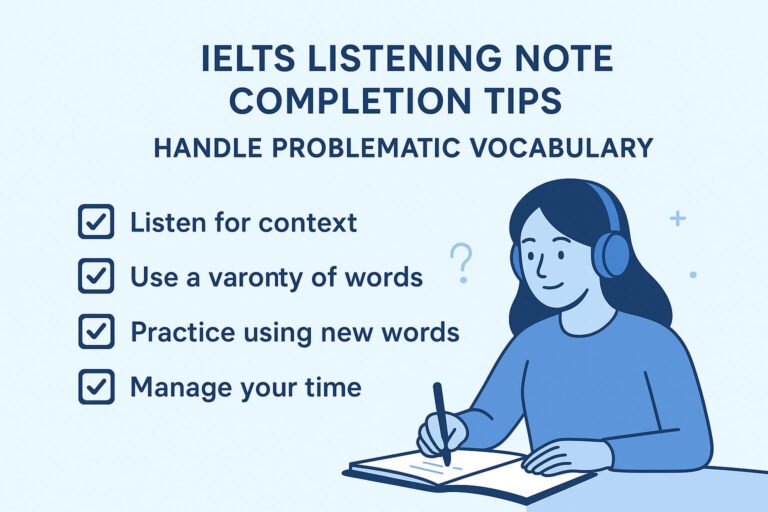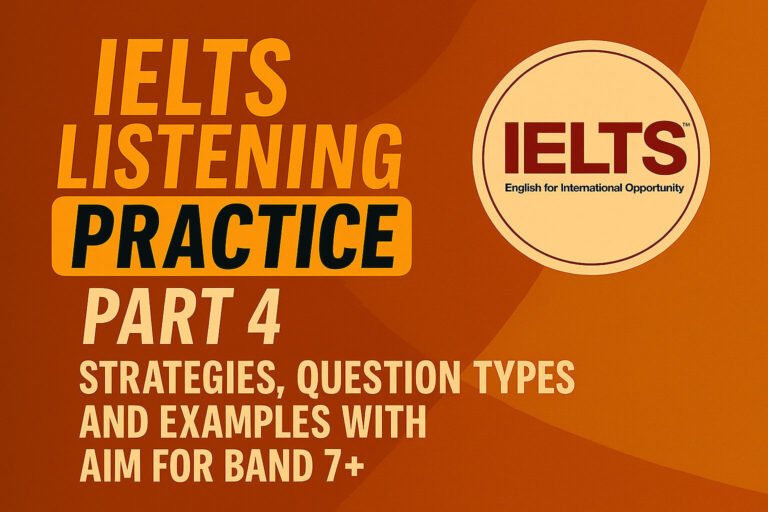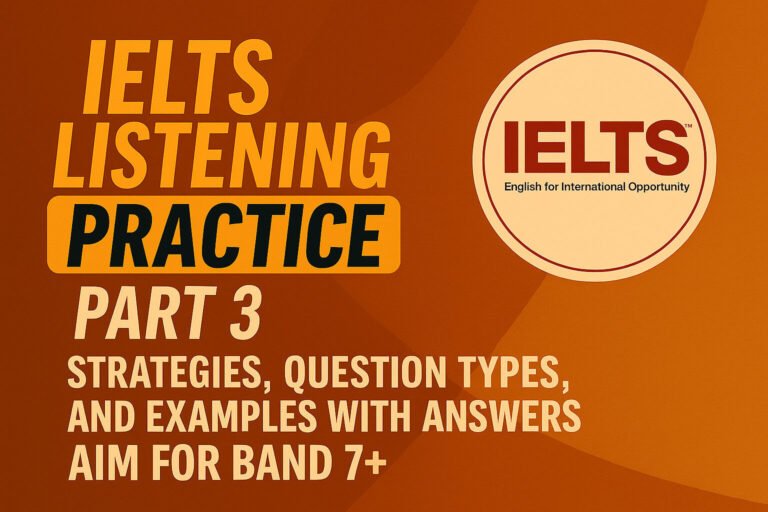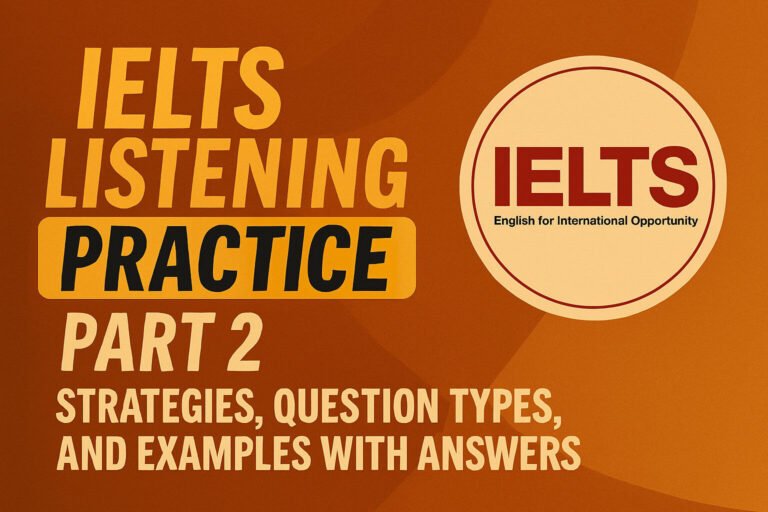IELTS academic writing task 1 with preparation tips, examples, and strategies. Boost your score—learn everything you need to know today!. Feeling lost when faced with charts and graphs in IELTS Academic Writing Task 1? Many aspirants struggle to describe data clearly within the 20-minute limit. This guide on IELTS academic writing task 1 will walk you through everything you need to know, from preparation tips to avoiding common mistakes. You’ll gain the skills to write confidently and boost your score.
We’ll cover IELTS Writing Task 1 Academic details, including how to use longer sentences, linkers, and connectors, while steering clear of informal language, repetition, and grammatical errors. Let’s get you ready to shine!
What is IELTS Academic Writing Task 1? A Clear Start
IELTS academic writing task 1 requires you to describe visual information, like a bar chart, line graph, pie chart, table, diagram, or map, in 150 words. You have 20 minutes to summarize data, trends, or processes. It’s part of the 60-minute Academic Writing test.
This task tests your ability to analyze and present information accurately. Preparation tips for IELTS Writing Task 1 Academic will help you manage time and meet the criteria. Practice makes it easier over time.
Think of it as telling a story with numbers—start with the basics!
Why IELTS Academic Writing Task 1 Matters
Mastering IELTS academic writing task 1 is crucial for your overall band score. Many lose marks due to unclear descriptions or poor structure. It’s worth 33% of your writing score, so doing well here sets a strong foundation.
Preparation tips for IELTS Writing Task 1 Academic improve your skills in analyzing data and using varied language. With practice, you can avoid common pitfalls and aim for a band 7 or higher. Consistency is your key to success.
See it as a skill to build—every practice brings you closer to your goal.
Understanding the Task: What to Do
In IELTS academic writing task 1, you’ll see visual data like a pie chart or diagram. Your job is to write an overview, highlight key trends, and compare data points. Avoid adding your own thoughts—focus on the facts.
Structure it with 3-4 paragraphs: introduction, overview, details, and (if time) a summary. Everything you need to know about IELTS Writing Task 1 Academic starts with understanding the question. Practice with sample charts to get comfortable.
This approach ensures you meet the task requirements every time.
Key Preparation Tips for IELTS Writing Task 1 Academic
To excel, follow these preparation tips for IELTS Writing Task 1 Academic:
- Analyze the Data: Spend 2-3 minutes identifying trends or comparisons.
- Plan Your Response: Sketch a quick outline before writing.
- Use Longer Sentences: Combine ideas for better GRA (e.g., “Sales increased, and profits rose steadily.”).
- Add Linkers and Connectors: Use “however,” “in addition,” or “for instance” to boost CC.
- Avoid Informal Language: Skip “kids” for “children” or “lots” for “many.”
- Check Spelling: Errors like “recieve” instead of “receive” cost marks.
Practice these daily to build confidence and accuracy.
Common Mistakes to Avoid
Many candidates make errors that lower their score. Here’s what to watch out for:
- Stop Split: Don’t split infinitives (e.g., “to quickly go” → “to go quickly”).
- Stop Informal: Avoid slang like “cool” or short forms like “can’t.”
- Avoid Repetition: Don’t repeat “increase” use “rise” or “grow” instead.
- Avoid Grammatical Errors: Check verb tenses (e.g., “was” vs. “is”).
- No Own Thoughts: Stick to data, not opinions like “I think it’s good.”
Preparation tips for IELTS Writing Task 1 Academic include reviewing these mistakes. Practice spotting them in your writing.
Sample IELTS Academic Writing Task 1 Response
Let’s look at a sample for IELTS academic writing task 1. Imagine a line graph showing population growth from 2000 to 2020.
Response:
The line graph illustrates population growth in three cities from 2000 to 2020. Overall, City A showed the most significant increase. In 2000, City A had 50,000 residents, rising to 80,000 by 2020. City B grew steadily from 30,000 to 45,000, while City C remained stable at 20,000. In addition, the growth in City A was faster after 2010.
Tip: Highlight the overview and use connectors like “in addition.”
Using Longer Sentences and Linkers
Longer sentences improve GRA if done well. Combine ideas: “The sales rose in 2019, and this trend continued into 2020.” Avoid run-ons—keep them clear.
Use linkers like “furthermore” or “on the other hand” for CC. Example: “Profits increased; however, costs also rose.” Practice writing 2-3 compound sentences daily.
This technique makes your IELTS academic writing task 1 stand out.
Avoiding Constructions, Short Forms, and Repetition
Avoid awkward constructions like “due to the fact that” — use “because” instead. Skip short forms like “don’t” — write “do not.”
Reduce repetition by varying words: “decline” for “decrease,” “proportion” for “percentage.” Preparation tips for IELTS Writing Task 1 Academic include practicing synonyms.
Check your draft to replace repeats before submitting.
Spelling and Grammatical Accuracy
Spelling errors (e.g., “accomodation” for “accommodation”) hurt LR. Proofread for mistakes like “their” vs. “there.”
Grammatical accuracy means correct tenses. If data is past, use “increased” not “increases.” Practice with a grammar app to improve.
This ensures your IELTS academic writing task 1 is error-free.
Table: Common Visual Data Types and Focus
| Data Type | Focus | Example Phrase | Tip |
|---|---|---|---|
| Bar Chart | Comparisons | “Sales were higher in 2020.” | Compare categories |
| Line Graph | Trends | “Growth rose steadily.” | Note changes over time |
| Pie Chart | Proportions | “40% of total sales.” | Highlight percentages |
| Table | Data Points | “Figures show 50 units.” | Summarize key numbers |
| Diagram | Process | “Water is filtered first.” | Follow steps |
| Map | Changes | “New roads were added.” | Describe differences |
This table guides your IELTS academic writing task 1 practice.
Daily Practice Plan for IELTS Writing Task 1 Academic
Day 1-3: Describe one data type (e.g., bar chart) in 20 minutes.
Day 4-6: Practice mixed types, timing yourself.
Week 2: Review with model answers, focus on GRA and LR.
Resources: Free samples from IELTS.org or Cambridge books.
Advanced Techniques for Band 7+
For a higher band, use complex sentences: “Although sales dropped, profits remained stable.” Avoid overcomplicating—keep it clear.
Practice everything you need to know about IELTS Writing Task 1 Academic with timed tests. Seek feedback to refine skills.
FAQ: Your IELTS Academic Writing Task 1 Questions Answered
What is IELTS academic writing task 1 about?
It’s describing visual data like charts or maps in 150 words within 20 minutes.
How can I improve my IELTS Writing Task 1 Academic?
Use preparation tips like planning and practicing longer sentences daily.
What types of data appear in IELTS Writing Task 1 Academic?
Bar charts, line graphs, pie charts, tables, diagrams, and maps are common.
How is Task 1 scored?
It’s marked on TA, GRA, LR, and CC, each worth 25% of the score.
Can I add my own opinions in Task 1?
No, focus on data description, not personal thoughts.
How much time should I spend planning?
Spend 2-3 minutes to outline your response effectively.
Mastering IELTS academic writing task 1 takes practice, but you’re on the right path. Stay motivated, keep writing, and visit IELTSNest.com
for more tips. You’ve got this!











